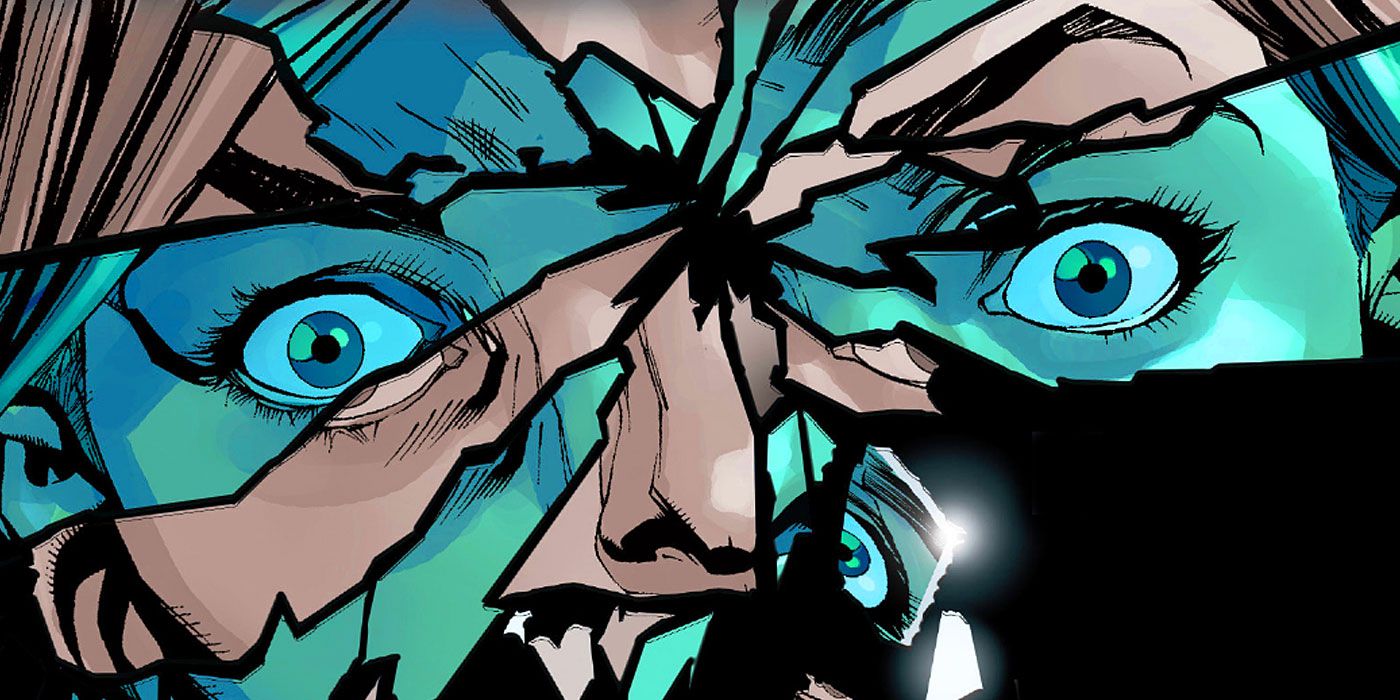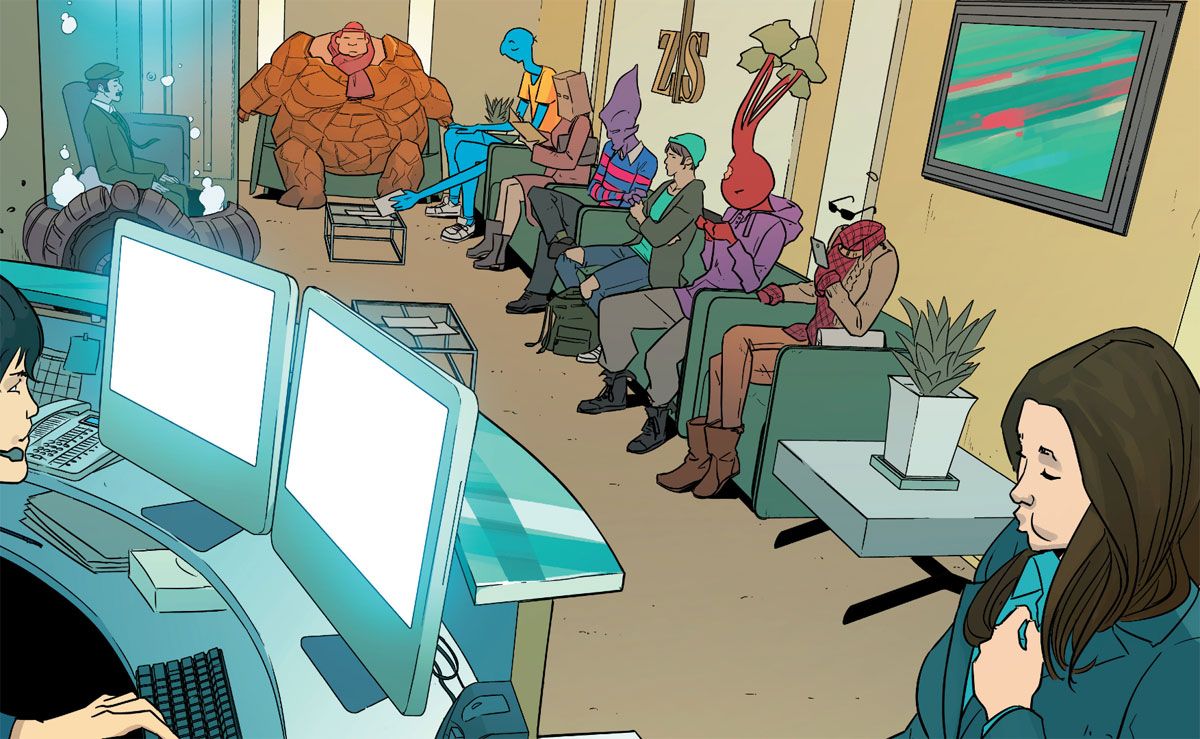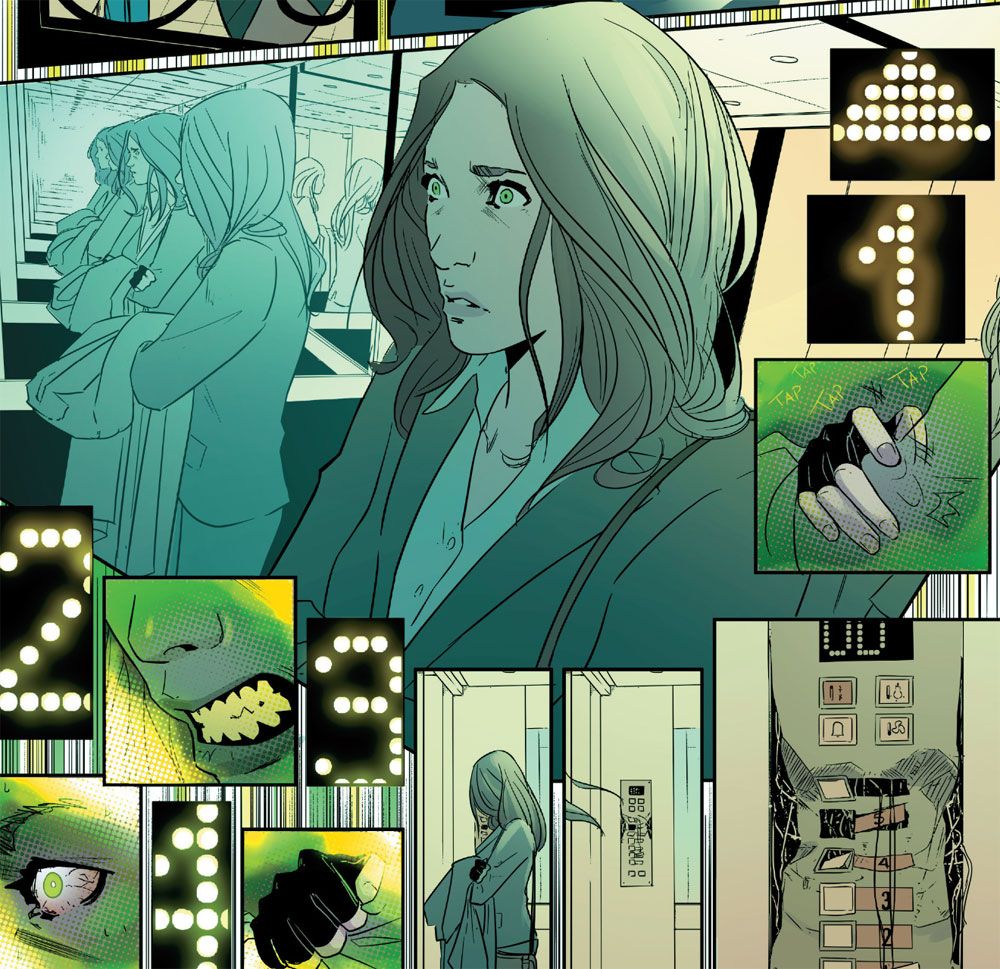She-Hulk, aka Jennifer Walters, is the character who just won't quit. She's headlined numerous series since her debut in 1980, coming a long way since her gruff demeanor in "Savage She-Hulk" #1. Most known for her sense of humor, her preference to stay in her Hulk form, and for being a lawyer, all of her different modern series have focused on these as the centerpieces of her adventure.
RELATED: She-Hulk: The Jade Giant’s 15 Best Moments
In "Hulk" #1, while Jennifer is still a lawyer, "Civil War II" circumstances give us an otherwise very different She-Hulk, courtesy the creative team of Mariko Tamaki and Nico Leon.
Jennifer Walters, Esquire
When "Hulk" #1 opens, Jen is heading back to work, her first day re-employed by the law firm of Ryu, Barber, Zucker and Scott. She notes that it's a fancy firm, one where the level of corporate luxury is high and the lawyers are sufficiently pampered. It's also easily set up why she's made this decision; she was beaten into a coma by Thanos in the "Civil War II" miniseries, and when she awoke, it was to the revelation that Hawkeye had killed her cousin Bruce Banner, aka the original Hulk. Now, she's suffering from serious emotional and mental issues as a result. She's easily startled, is so nervous about going to work that she's nauseated, and even the crowded world of New York -- something she claims will help because she can become anonymous within its masses -- is depicted by Leon and colorist Matt Milla as an increasingly overwhelming situation with an increasingly green tint from one panel to the next.
The one familiar aspect is that Jen is once more working with super-powered beings. This is a niche we've seen in several of her previous series, and something that makes perfect sense. The chance of your lawyer being prejudiced against you is much less when you're both part of the same minority, and regardless of the origin of the superhuman abilities, people with them are still a small percentage in the Marvel Universe. Previous series focused on Jen helping out big names in the superhero world (most notably defending Captain America in court with Daredevil as opposing counsel), but here, we're given a slightly more low-level approach.
Her first client is an older woman with an altered appearance and indeterminate powers, and when we pan through the waiting room, it's a montage of ridiculous appearances and no familiar faces. This gives Tamaki additional leeway on what happens with her clients -- they don't have their own titles or guest-appearances elsewhere to worry about -- and as a result raises the stakes. It provides a glimpse into how She-Hulk has taken a big step away from the world of superheroes, distancing herself from the situation that killed her cousin -- and nearly killed her.
That's Jennifer Walters, Esquire; Not She-Hulk, Esquire
The biggest change of all for Jen in "Hulk" #1, though, is that she's Jennifer Walters throughout the entire book. Specifically, she's not She-Hulk. This is a huge change for a character that upon being (at the time) permanently locked into her She-Hulk form from absorbing a lot of radiation in "Marvel Graphic Novel #18: Sensational She-Hulk," essentially shrugged it off as a good thing. While her ability to change back and forth was eventually restored, it's safe to say that her default appearance throughout the decades has been that of a green-skinned and muscular hero.
At first, it could be mistaken for simply going incognito. The events of "Civil War II" rocked the Marvel Universe, and her new job is a little lower-profile. She's also being hounded by Florida Mayer, a social worker who's writing a book about trauma and specifically wants to interview Jen, who wants nothing to do with it. But as we see throughout "Hulk" #1, it appears to be more than just that. A recurring scene finds Jen watching/listening to cooking videos, the explanation being that a nurse told her cooking videos were calming, able to "soothe the savage beast." In "Hulk" #1, it grows clear very rapidly that there is a beast caged in Jen's heart; a confrontation with Florida Mayer results in a smashed elevator panel, and we see Jen struggling to keep from changing when she gets to her home, stifling her transformation at the green eyes and enlarged veins stage. "It used to feel strong," she tells herself. "Now it feels like dying, like a truck driving through my heart, like every hurt is right there, pouring through me." This is one of the most unstable depictions we've seen of the character in her 36 years, and potentially the most dangerous.
The change from Jennifer Walters starring in a "She-Hulk" series to a "Hulk" series is crystal clear by the end of "Hulk" #1. "She-Hulk," in all its incarnations, was about a character in control of her transformations and emotions. "Hulk" is about someone who's struggling to keep her rage and hurt in check, lest it destroys the world around her. On the surface, Jen may still be in charge of her life and career, but internally, she's a ticking time-bomb. The new Hulk in town is no less dangerous than the old Hulk. Good luck, Jen. You, and all of New York, will need it.



